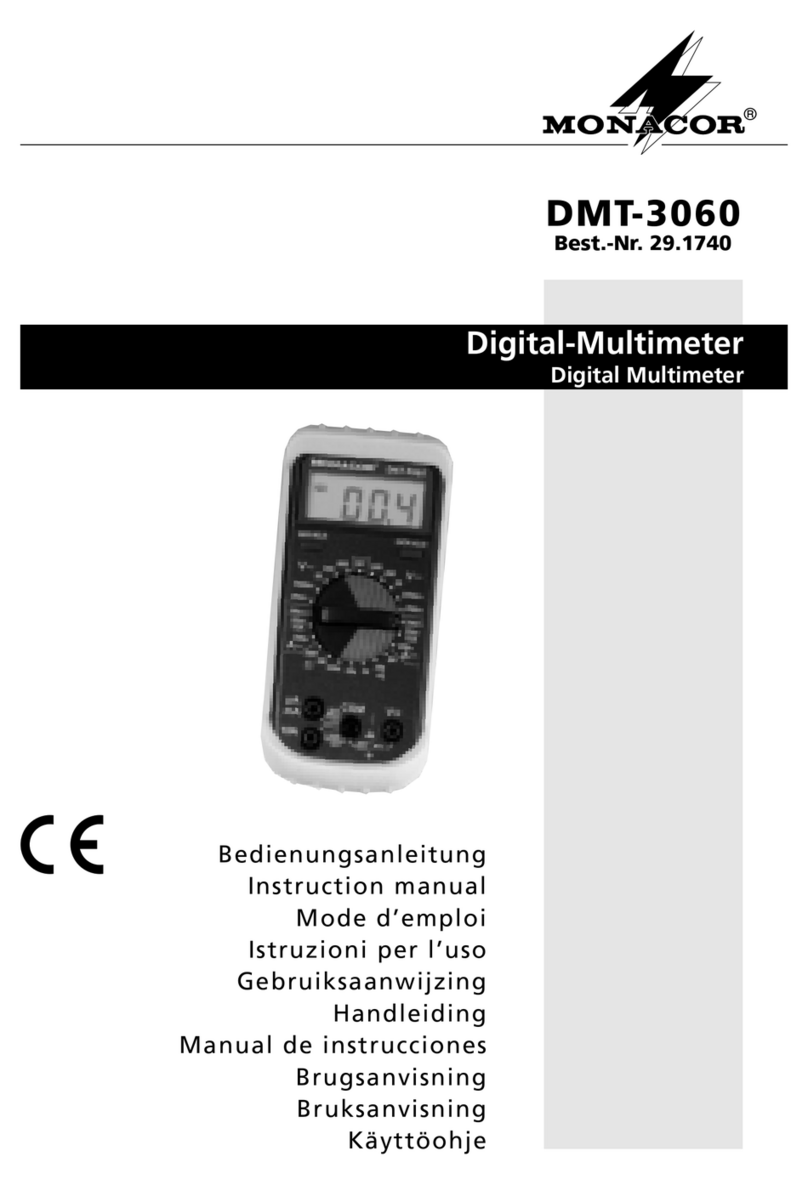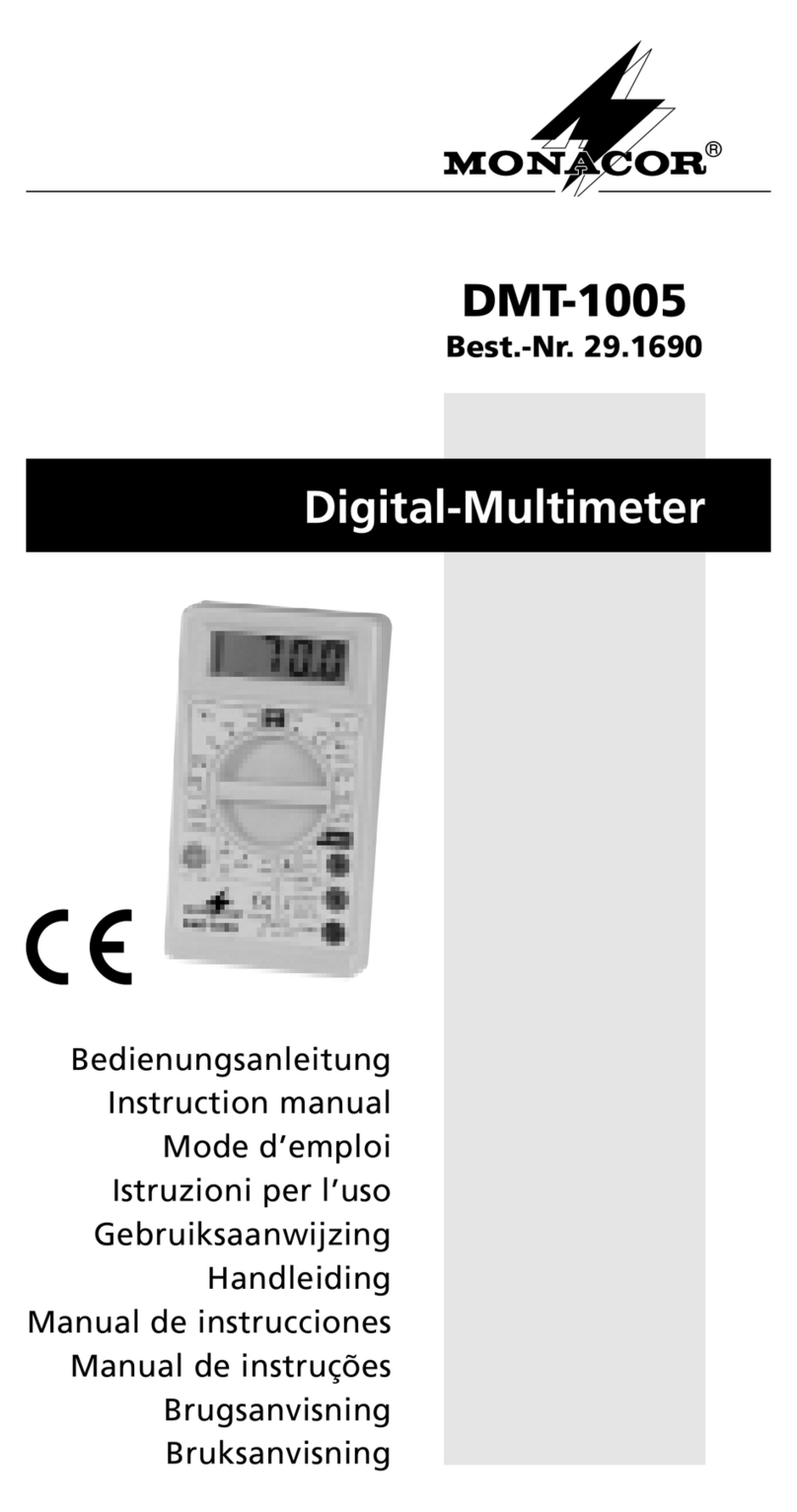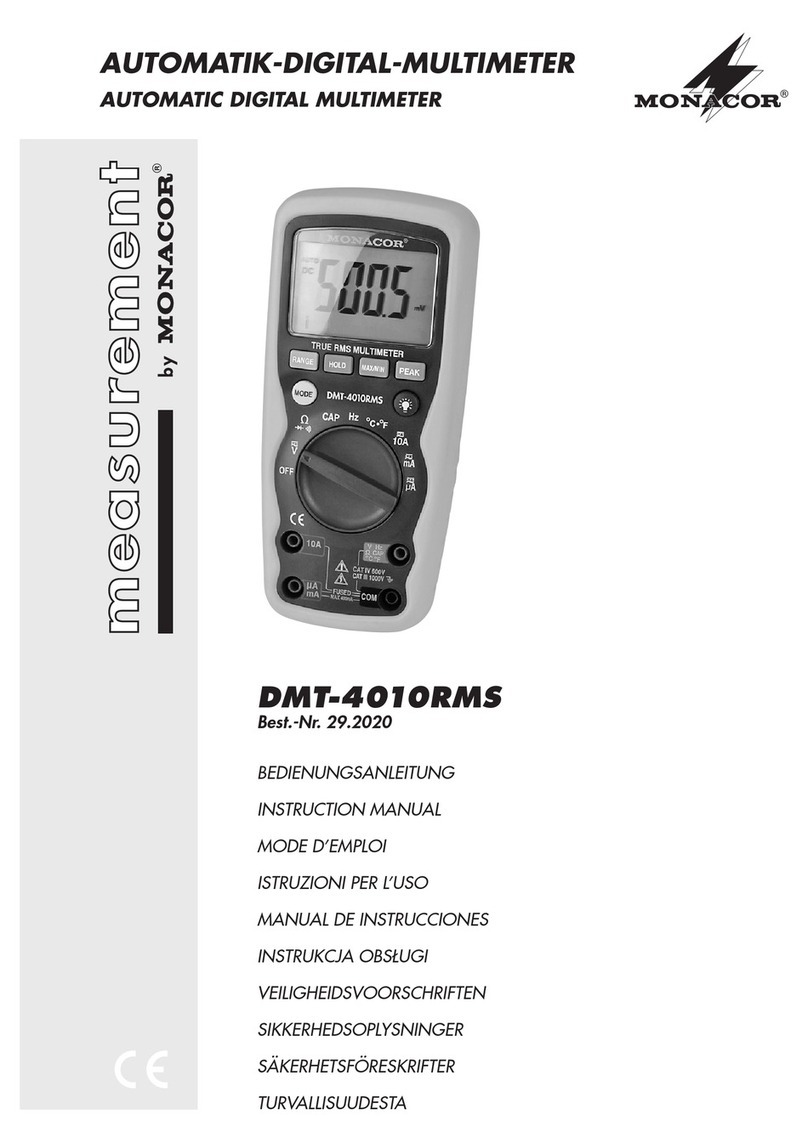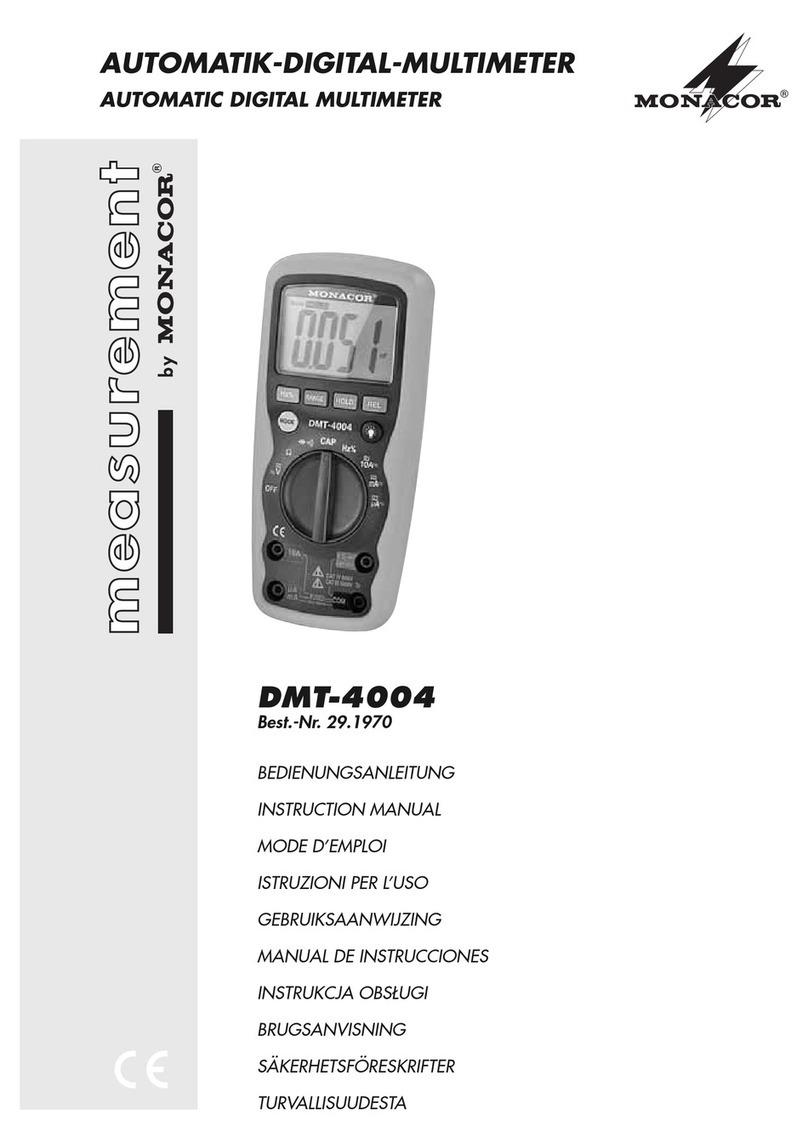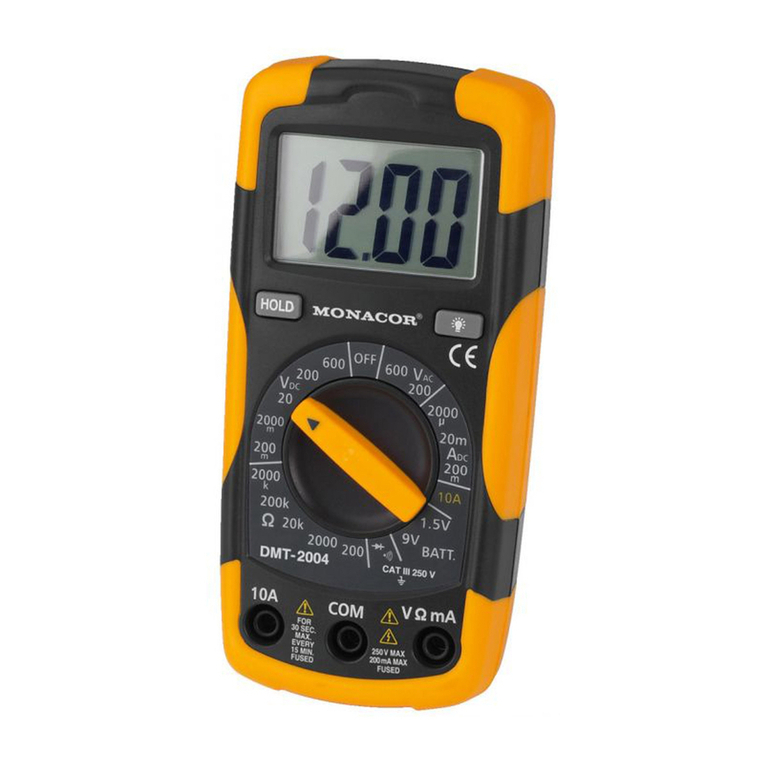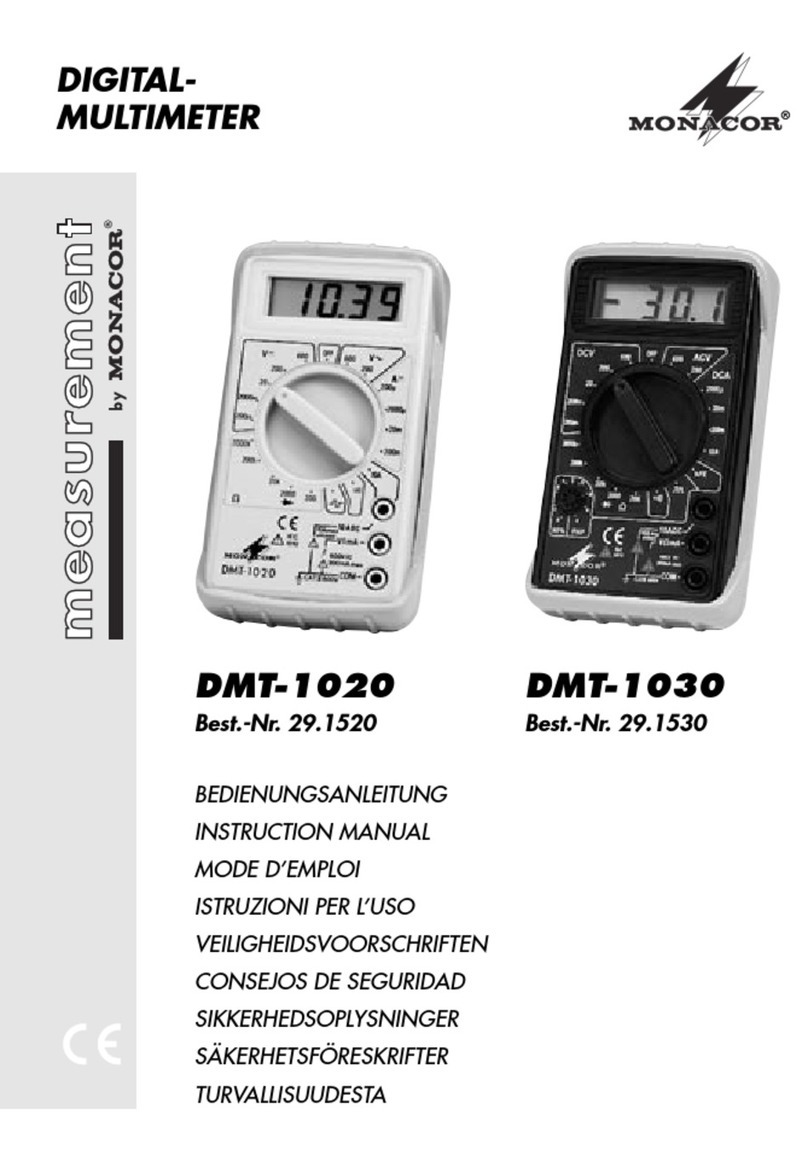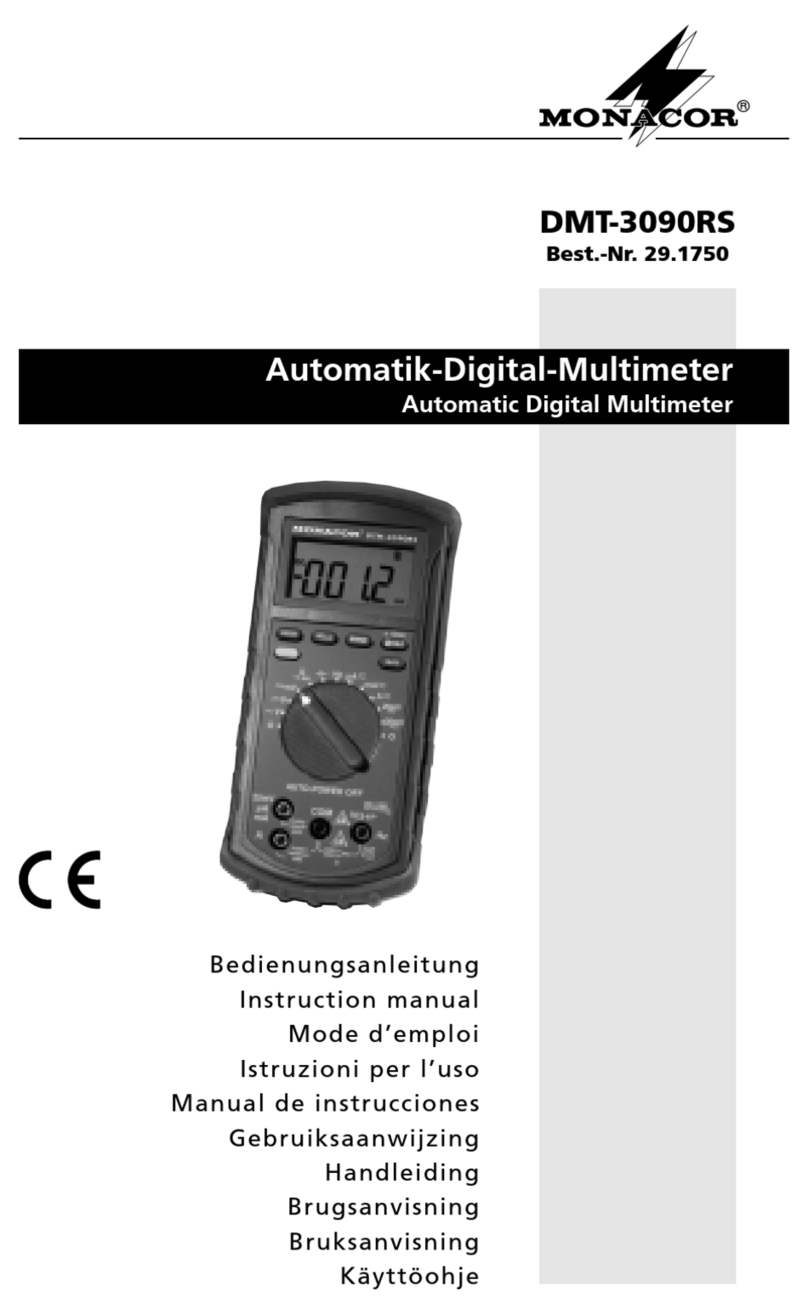2
Bevor Sie einschalten
Wir wünschen Ihnen viel Spaß
mit Ihrem neuen Gerät von
MONACOR. Bitte lesen Sie
vor dem Gebrauch diese An-
leitung. Der deutsche Text be-
ginnt auf der Seite 4.
D
A
CH
Before you switch on
We wish you much pleasure
with your new unit by
MONACOR. Please read
these instructions before use.
The English text starts on
page 12.
GB
Avant toute utilisation
Nous vous remercions d'avoir
choisi un appareil MONACOR
et vous prions de lire cette
notice.
La version française com-
mence à la page 20.
F
B
CH
Prima di accendere
Vi auguriamo buon diverti-
mento con il Vostro nuovo ap-
parecchio MONACOR. Vi pre-
ghiamo di leggere le presenti
istruzioni prima dell'uso. Il testo
italiano inizia a pagina 28.
I
Antes de la conexión
Le agradecemos el haber ad-
quirido un equipo MONACOR.
Por favor, lee atentamente las
instrucciones de seguridad
antes del uso. Las instrucio-
nes de seguridad se encuen-
tran en la página 45.
B
PL Alvorens u inschakelt
Wij raden u aan deze hand-
leiding goed door te lezen
voor u het apparaat in gebruik
neemt.
U vindt de veiligheidsvoor-
schriften op pagina 44.
NL
Inden De tænder for
apparatet
Vi ønsker Dem god fornøjelse
med Deres nye apparat. Læs
hele brugsanvisningen igen-
nemførbrug.Sikkerhedsoplys-
ningerne finder De på side 46.
DK
Innan enheten tas i bruk
Läs igenom bruksanvisningen
för att undvika fel och/eller
skador på densamma.
Du finner säkerhetsinstruktio-
nerna på sidan 47.
S
Ennen virran kytkemistä
Toivomme että saat paljon
hyötyä ja iloa uudesta
MONACOR-laitteestasi. Lue
nämä ohjeet ennen käyttöä.
Käyttöohjeet löydät sivulta 48.
FIN
Przed Uruchomieniem
Życzymy Państwu zadowole-
nia z nowego urządzenia firmy
MONACOR. Prosimy o zapoz-
nanie się z niniejsza instrukcją
przed przystąpieniem do jego
użytkowania. Tekst polski za-
czyna się na stronie 36.
E
